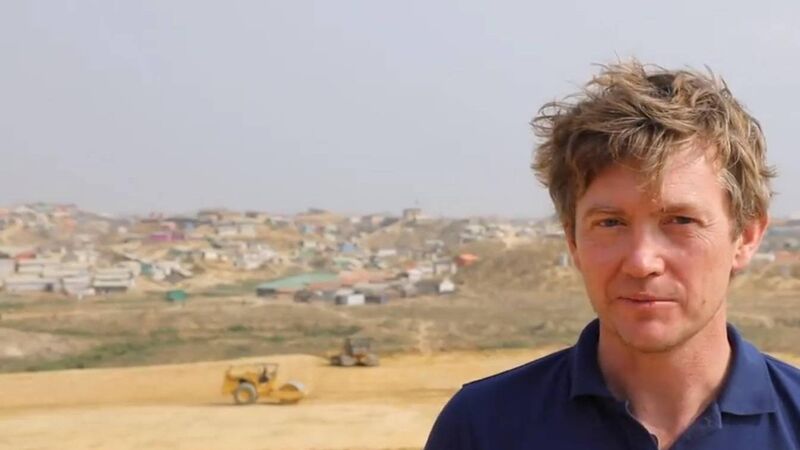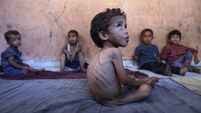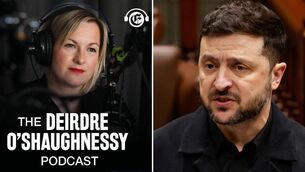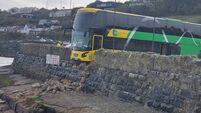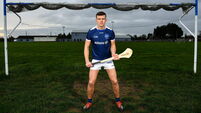When Naoise Ryan heard the news that the World Food Programme (WFP) had been awarded the 2020 Nobel Peace Prize, she had mixed feelings.
Part of her was pleased. An honour for the UN organisation was also an honour for her husband, Micheál (Mick) Ryan, 39, who was killed with seven colleagues when a Boeing 737 Max crashed six minutes after take-off from Addis Ababa, Ethiopia, on 10 March 2019, killing all 157 people on board.
Friends and colleagues got in touch to make that point, saying that WFP won the Nobel Peace Prize because it had people like Mick. As WFP deputy executive director, Amir Abdullah, put it: “Mick is a UN hero.”
At least the Nobel peace prize will remind people how WFP staff lay their lives on the line every single day so that they can bring food and aid to 100 million people around the world.
Mick Ryan, for instance, didn’t think twice about volunteering to go to Liberia in 2014 when others baulked at working in a country where ebola was killing thousands of people.
“I know I can do something to help,” the organisation’s deputy chief engineer told his wife Naoise who, when suddenly confronted with the prospect of the trip, really feared for his life.
“For the first week I was on tenterhooks, but he assured me he wasn’t taking any unnecessary risks and I believed him,” she says now.
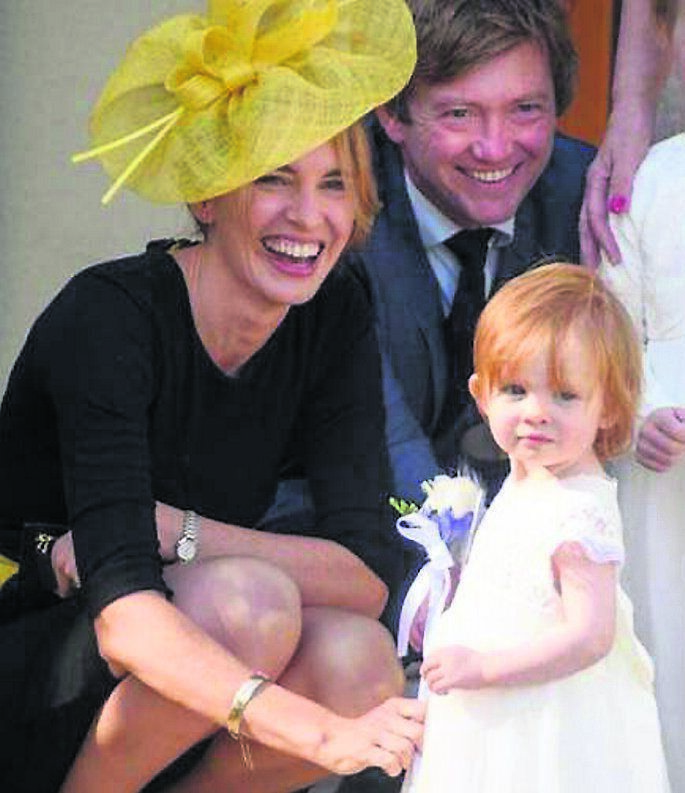
She recalls that he extended his planned four-week stint so that he could oversee the building of field hospitals to care for the sick and the dying.
He and his team built 24 hospitals in six weeks. He wasn’t one to leave before the job was done.
News of the prize has allowed those memories to flood back, but it has also reignited in Naoise a deep anger about how her husband died, along with all 156 others travelling on board Ethiopian Airlines flight 302 en route from Addis Ababa to Nairobi in Kenya in March 2019.
“It is abhorrent, unfathomable,” she says. “As humanitarian workers, you always fear hostage-taking, landmines, compound attacks but never do you imagine you would lose your life on a Boeing plane supposedly designed and engineered by the best in the world far removed from the traumas of war, conflict, neglect and desperation. Yet Mick and his colleagues were killed on a Boeing Max plane.
“The Max planes were certified safe to fly when clearly they were not,” she says, quoting a phrase from the damning final report on the Boeing 737 Max released last month after an 18-month investigation.
He had travelled and worked in many dangerous and risky places but it was a piece of software on an aeroplane that was known to be defective, that brought him down, she says.
“This was definitely not an accident,” she says. “It was not an act of God, or the fault of a pilot. It was the direct result of a series of negligent acts within an airplane manufacturing company.
Specifically, these acts appear to be the result of putting profit before people’s lives.
Talk of it brings her back to that March morning when her life was about to change for ever.
Around 7am on March 10, 2019, she sent a picture of Saorlaith (then three) and MacDara (then six months) to Mick’s phone along with the caption: “Good morning Daddy.”
She saw that it had sent but had not been delivered. She didn’t think any more of it.
Two hours earlier, her husband had boarded a flight on Ethiopian Airline’s only Boeing 737 Max jet, along with seven of his colleagues.
He wasn’t even supposed to be on it. His next scheduled overseas trip was to Cairo but when he heard several key colleagues from various country offices in the region were gathering in Kenya for a workshop, he thought it was an ideal opportunity to meet them all together.
“He had a vision for Africa and how WFP engineering could change the way emergency operations could be handled right across the continent. He wanted to bring everyone on board with this idea,” Naoise says.
"He always put people first"
It is poignant beyond words to watch him describe that work himself in a video posted on YouTube where he explains the need to move 700,000 Rohingya refugees camped south of the Bangladeshi city of Cox’s Bazar to higher ground ahead of the 2018 monsoon season with its floods and landslides.
“They had six months to prepare,” Naoise says. “It was a massive operation, they hired all available equipment in the region and, more importantly for Mick, they employed some 5,000 refugees to help so that they would feel involved and earn a living.
“They felt useful, listened to. Mick told the story of how they were smiling while working and listening to Kylie Minogue on the radio.”
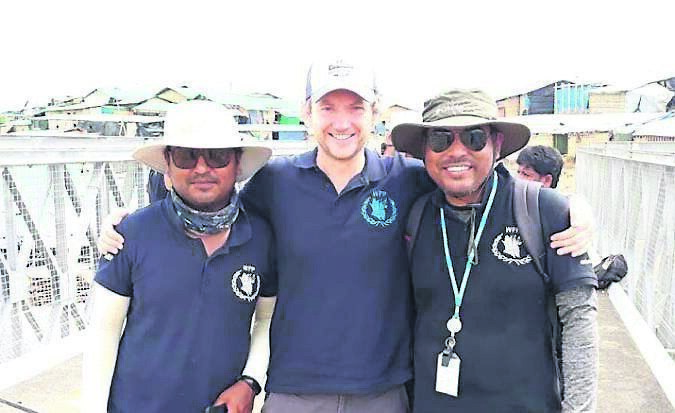
They built a new camp on safe ground in time, saving thousands of lives when the rains came. There wasn’t a single death in the new camp, although one little girl died outside the official zone.
“I remember him being really upset about that, he always put people first,” his wife says.
That brings her back to the thought that others (namely a company long-associated with American ingenuity and technological success, Boeing, and the Federal Aviation Administration) which patently did not put the safety of people first when it came to the Boeing 737 Max, a
finding confirmed in a scathing US congressional report.
That report opens with an almost poetic description of the events of Sunday morning, March 10, 2019: “It was a crystal-clear day, but within minutes of takeoff the unthinkable happened: the Boeing 737 Max, a brand new aircraft with 157 passengers and crew members on board, began to dive back towards the ground as the pilots fought to force the plane’s nose back up toward the sky. The battle did not last long.
“Six minutes after takeoff, Ethiopian Airlines flight 302 crashed. The jet’s impact left a massive crater in a field just a few miles from the airport. Not a single soul survived.”
The crash followed a similar fatal crash five months before when, on October 28, a 737 Max, operated by Lion Air in Indonesia, crashed
moments after leaving Jakarta airport, killing all 189 people on board.
Two days after the Ethiopian crash, all 737 Max planes, which were flown by 59 air carriers worldwide, were grounded.
Soon it emerged that there were uncontrolled drops in the aircraft’s nose in the moments before both crashes, which investigators later blamed on the aircraft’s anti-stall flight system, called the manoeuvring characteristics augmentation system.
Despite following the procedures recommended by Boeing, neither crew was able to regain control.
The worst experience of my entire life
The first indication Naoise had that something was wrong came around 11am on Sunday when she realised that she had a number of missed calls.
A friend then rang her to ask if she had seen news reports that a plane, flying from Addis Ababa to Nairobi, had come down in Africa.
She thought back to the unanswered text earlier that day and got an awful feeling in the pit of her stomach, but kept telling herself that it couldn’t be true.
She rang the only person who could give her a definite answer, Dina Jerkovic at WFP headquarters in Rome.
“When she started crying, I knew in that moment that it was true,” says Naoise.
“I knew I had to ring Mick’s mum and let her know.
Being told that this had happened and then having to tell her and my daughter was the worst experience of my entire life.
Later, when the details of what had happened started to emerge, she began to wonder how passengers must have felt when the plane went into nosedive and they knew, for five or six minutes, that something awful was going to happen.
One man, Paul Njoroge, who lost his wife Carolyne, and their children — three-year-old Ryan, four-year-old Kelli, and nine-month-old Rubi — and his mother-in-law, Ann, can’t get those six minutes out of his mind.
A year after the crash, he testified before the US House Committee on Transportation and Infrastructure and said he was still haunted by the image of his young children’s final moments.
“I have nightmares about how they must have clung to their mother, crying, seeing the fright in her eyes as they sat there helplessly,” he said. “And there was nothing I could do to save them. I miss their laughter, their playfulness, their touch.”
Naoise Ryan quotes his testimony because she truly empathises.
“I have to live with wondering what Mick went through in those minutes. That is terror; what he went through. He experienced terror on something that should have been a safe, commercial flight.”
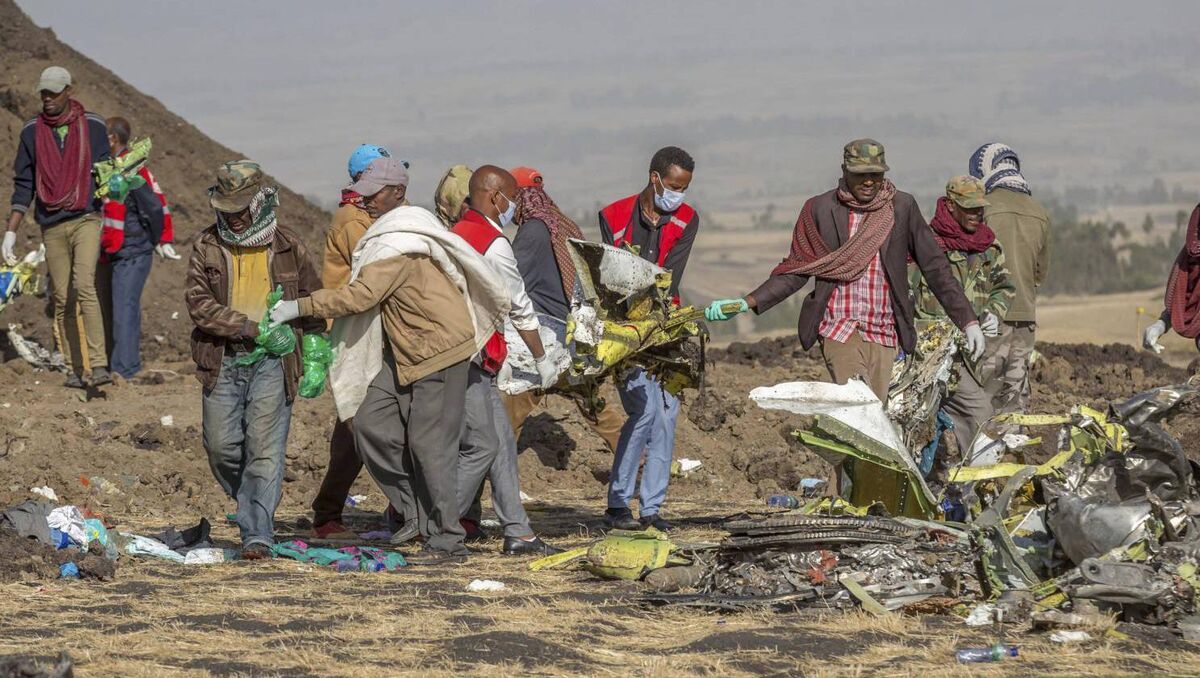
At the time of the crash, the Ryan family was getting ready to move to Rome. Naoise, also an engineer, was due to start a job at the World Food Programme too and, she says, “in a way, life was only beginning”.
Instead, she was plunged into what she describes as a twilight zone. All she had left of Mick, from the time they met at university in 2001 until the last time she saw him, a week before the crash, were photos, videos, and memories.
Then, about seven months after the crash, she heard that a piece of his passport had been located, followed by the deeply unsettling news that DNA analysis had identified remains. She was so angry to find out that her husband’s remains had been lying “in some building in Addis Ababa” all that time and nobody knew.
“Also, the thought of a casket coming home was too much to cope with. It made it real,” she says.
A fitting gesture
Mick’s mother Christine and his brother Tiernán travelled to Ethiopia to bring his remains home to his native Lahinch, Co Clare, where he was buried after a memorial service at Lahinch church.
His friends remembered Mick, a keen surfer, by paddling out into
the waves on Lahinch beach. The aides de camps of President Michael D Higgins and then-taoiseach Leo Varadkar were both present. The family thought it a fitting gesture to show the country’s respect for a repatriated UN hero.
What happened in the church during that day’s memorial service is also worth recalling because it is still relevant today, more than a year later.
Fr Des Forde, Lahinch parish priest, got sustained applause when he said: “The tragedy that happened to Mick and the 156 other passengers and the planes have been grounded since, someone must take responsibility for the lack of updating such simple machinery.”
Complex and far-reaching
As it turns out, the issues involved in the 737 Max disasters were far more complex and far-reaching than the software that was blamed for sending both planes into nosedives.
However, it has since emerged that Boeing’s engineers raised concerns about the software as early as 2012 and warned that a delay in responding to its activation could be “catastrophic”.
Those concerns were never addressed.
However, “the Max crashes were not the result of a singular failure, technical mistake, or mismanaged event”, according to an 18-month US congressional investigation by the House Committee on Transportation and Infrastructure.
Its final report, released last month, was highly critical of both Boeing and the Federal Aviation Administration.
“The [Max crashes] were the horrific culmination of a series of faulty technical assumptions by Boeing’s engineers, a lack of transparency on the part of Boeing’s management, and grossly insufficient oversight by the Federal Aviation Administration,” it said.
“This is a tragedy that never should have happened. It could have been prevented,” said the committee’s chairman, Peter A DeFazio.
The report also noted that Boeing’s founder, William Boeing, was known as a stickler for accuracy, facts and quality.
Cruel Irony
With a degree of cruel irony, it includes this passage: “Soon after he established his airplane company in 1916, he noticed improperly- cut wooden planks called “spruce ribs” in his airplane factory and walked all over them until they broke, remarking that he would rather close down his shop than send out inferior work.
“His biography states: ‘He believed in details and told his managers that many a wrong decision stemmed from a detail overlooked or incorrectly interpreted.’”
He might be shocked to see the catalogue of failures outlined in detail in the 238-page report but words can’t quite capture the level of shock, anger and disbelief that Naoise Ryan felt when she read page after page describing a culture of concealment at Boeing that ultimately led to the loss of life of hundreds of people.
In a statement on its website, Boeing said it has learnt lessons from the crashes and had started to act on the recommendations of experts and government authorities.
It also said it had made significant governance and operational changes “to further sharpen its focus”. The report’s authors highlight the need to bring forward legislation to ensure that the flaws, mismanagement and lapses don’t happen again.
However, as of last month, those laws have not even been drafted yet alone enforced.
Justice and accountability
Now, there is speculation that the Federal Aviation Administration will soon lift its March 2019 grounding order, not least by Irish airline Ryanair which last week said that test flights in the US paved the way for the low-cost carrier to start receiving Max jets, rebranded as 737-8, in early 2021.
There is more, however. The final pages of the US Congressional report reveal that “multiple new problems, seemingly unrelated to the two fatal Max crashes, have also surfaced — from software glitches to manufacturing defects and production quality deficiencies — and the authors question Boeing’s willingness to admit mistakes”.
Naoise Ryan, however, wants more than just an admission of mistakes. Over the last 18 months, she has been unable to get satisfactory answers, indeed any answers, from Boeing about the defects discovered in their 737 Max jets or details of how they are being addressed.
“What happened in March 2019 happened to me and my family, and to the families of the other victims, but this could happen to anyone,” she says.
“I want Boeing, and the airlines using their planes, to outline the steps that were, and are, being taken so that people who board a plane in the future know that they are stepping onto an aircraft that has followed the most rigorous safety standards.
Those assurances haven’t come, yet now there is talk of putting those planes back in the air.
All she wants, she says, is the truth. And accountability.
“Mick never gave up on his family or the people he worked for and I, personally, will never give up on this demand for justice and accountability.”

Subscribe to access all of the Irish Examiner.
Try unlimited access from only €1.50 a week
Already a subscriber? Sign in
CONNECT WITH US TODAY
Be the first to know the latest news and updates
More in this section
